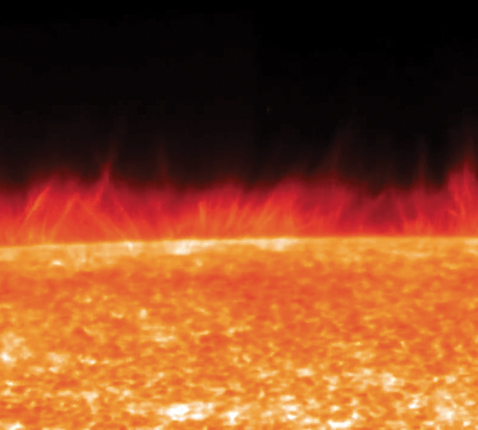What causes the Sun’s plasma jets?
DOI: 10.1063/PT.3.3687
Dynamic plasma jets called spicules (the thin lines of light pictured in the

NASA

Juan Martínez-Sykora and his colleagues at the Lockheed Martin Solar and Astrophysics Laboratory and the University of Oslo have developed a new model of the magnetic properties of the Sun’s plasma in an effort to understand spicule formation. They compared their simulation with data from NASA’s IRIS space telescope and from the ground-based Swedish 1-m Solar Telescope operated by Stockholm University. Their model shows that spicules form when magnetic tension on the Sun’s surface pushes plasma upward and that the release of that tension generates strong electrical currents and low-frequency plasma waves. Those currents and waves transmit significant amounts of energy. The findings suggest that spicules and their associated currents and waves could play a role in energizing the outer atmosphere of the Sun. (J. Martínez-Sykora et al., Science 356, 1269, 2017, doi:10.1126/science.aah5412
